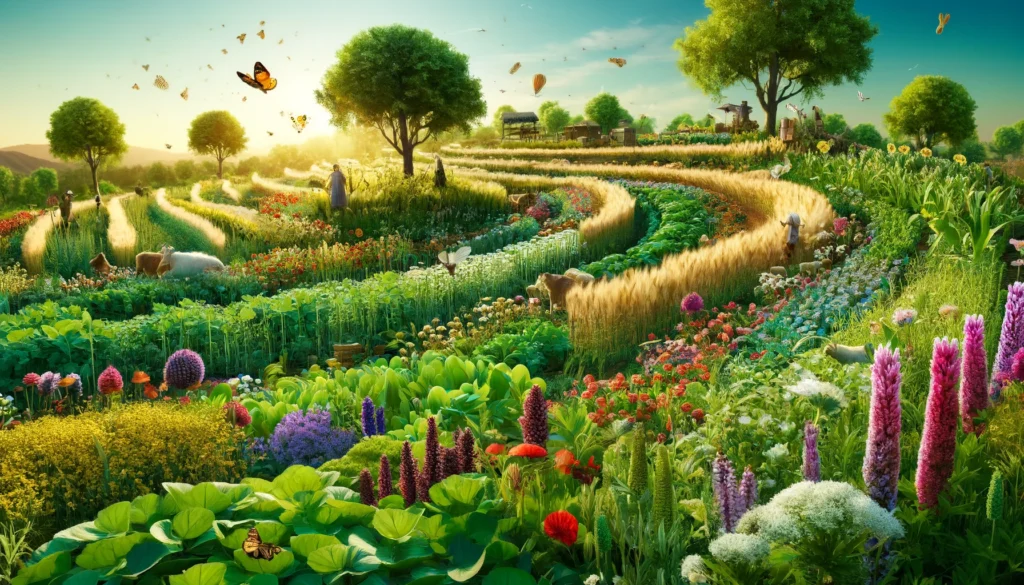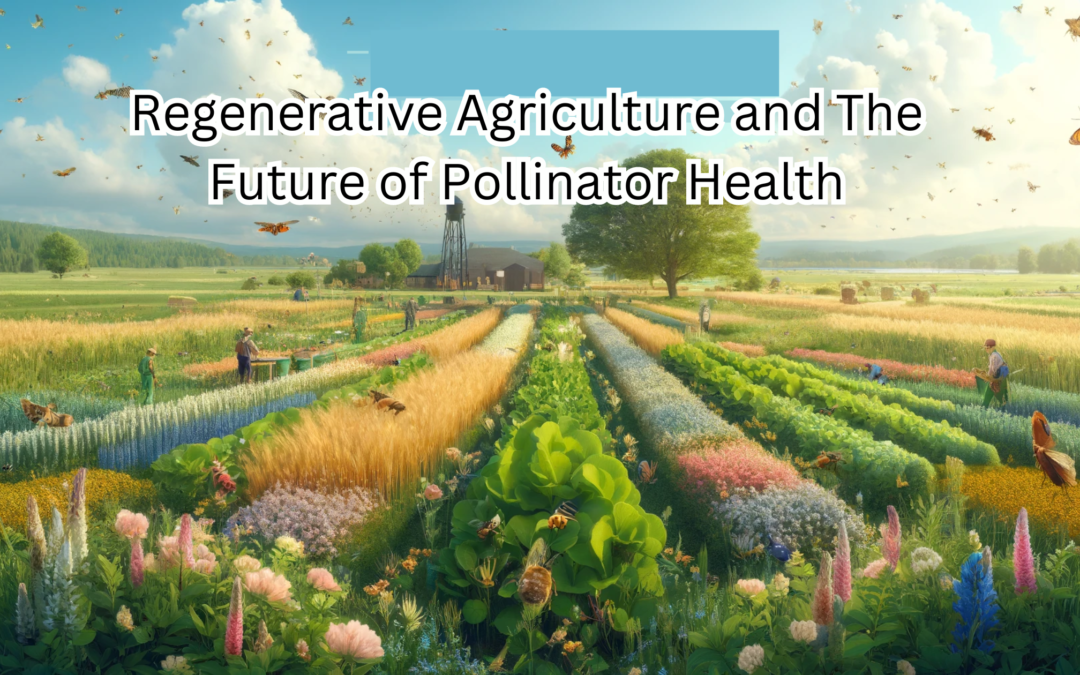Pollinators like bees, butterflies, birds, and bats play a crucial role in the health of our ecosystems and the production of food worldwide. By pollinating a wide variety of crops and natural plants, they facilitate reproduction and biodiversity. However, their populations are declining at alarming rates due to various factors, including disease, pesticide use, habitat loss, and climate change. Fortunately, regenerative agriculture offers promising approaches to improve pollinator health and secure its vital role in our food systems and ecosystems.
How Regenerative Agriculture Promotes Pollinator Health
The primary goals of regenerative agriculture are to preserve and improve biodiversity, ecosystems, and soil health. These methods foster diverse and robust habitats, creating favorable conditions for pollinator success. Here’s how regenerative agriculture helps pollinators:
Creating Habitat and Food Sources
Pollinators need specific habitats and feed supplies, which can be provided by techniques like integrating agroforestry systems, growing cover crops, and creating flower strips. These ecosystems support rich populations of pollinators by providing a variety of food sources and nesting places.
Cover Cropping: A Continuous Food Supply
Cover cropping is the practice of growing non-cash crops over the soil to improve soil health and stop erosion. Clover and buckwheat are two examples of cover crops that produce blooms that attract and feed pollinators. Throughout the growing season, these blooming plants offer pollinators consistent food sources, minimizing periods of low food availability that can harm their survival.

Agroforestry: Mimicking Nature
Agroforestry, which integrates trees and shrubs into agricultural systems, creates multi-layered habitats that resemble natural ecosystems. Trees and shrubs provide additional foraging options and nesting locations for a variety of pollinator species. They also offer protection against extreme weather and help create a more stable microclimate, benefiting pollinators that are sensitive to climate change.
Reducing Chemical Use
Regenerative farming places a strong emphasis on minimizing the use of chemicals, especially pesticides and herbicides, which are harmful to pollinators. Farmers can control pests naturally by implementing integrated pest management (IPM) techniques. These techniques include rotating crops, promoting beneficial insects, and using biological pest controls. By using fewer dangerous pesticides, these methods create safer habitats for pollinators.
Enhancing Soil Health
Regenerative agriculture also enhances soil health, which indirectly benefits pollinators. Healthy soils support diverse plant communities that offer a range of pollinator feeding opportunities. Improved soil organic matter and structure lead to stronger plants that can support pollinators for longer periods by improving water retention and nutrient cycling.
Conclusion
In summary, regenerative agriculture provides a comprehensive strategy for promoting and sustaining pollinator health. Regenerative techniques supply vital resources for pollinators and help halt their decline by generating diverse habitats, lowering chemical inputs, and fostering ecosystem resilience. Since pollinators are essential to biodiversity and food production, the health of our ecosystems and the sustainability of our agricultural systems are closely linked.
Regenerative agriculture is crucial for the sustainability of our food systems and the survival of pollinator populations. As a way of improving planet health, regenerative agriculture should be well understood and implemented if the future of pollinators’ health is to be sustained.
Join the Movement
It’s clear that regenerative agriculture holds the key to a brighter future for our pollinators. As we adopt these practices, we can create healthier ecosystems that support diverse and thriving pollinator populations. “Pollinators are essential to our food production and biodiversity,” says Dr. Jane Smith, an expert in sustainable agriculture. “By embracing regenerative practices, we’re not just helping pollinators; we’re ensuring a sustainable future for all.”
Join us in this crucial movement towards a more sustainable and pollinator-friendly world. Become part of the team and make a difference. Visit the EAT Community today to learn more and get involved. Together, we can make a difference.
Related Articles and Resoruces:
- Health Benefits of Eating Seafood – Is Seafood Safe?
- WHAT IS REGENERATIVE AGRICULTURE?
- How Regenerative Agriculture Impacts Ethical Animal Husbandry Practices
- Agroforestry: Integrating trees with crops for sustainability
- Forest Health and Resilience: Navigating the Challenges of Climate Change
- How Regenerative Agriculture Contributes to Sustainable Food Systems




Hey people!!!!!
Good mood and good luck to everyone!!!!!